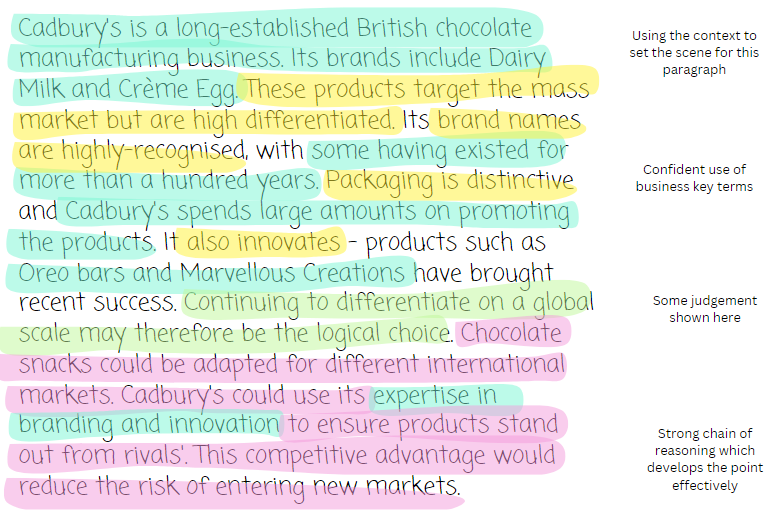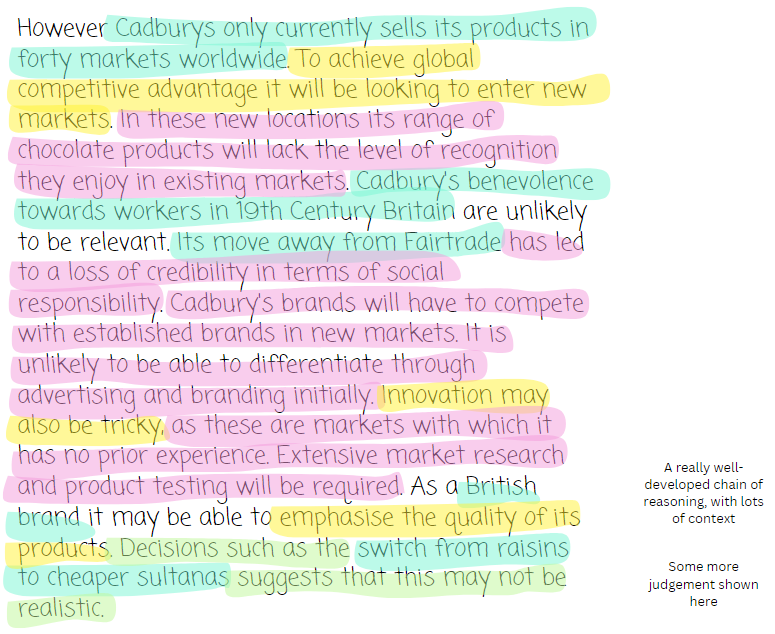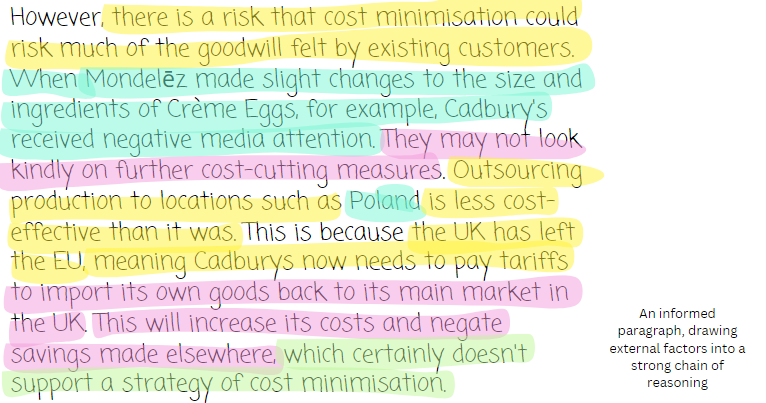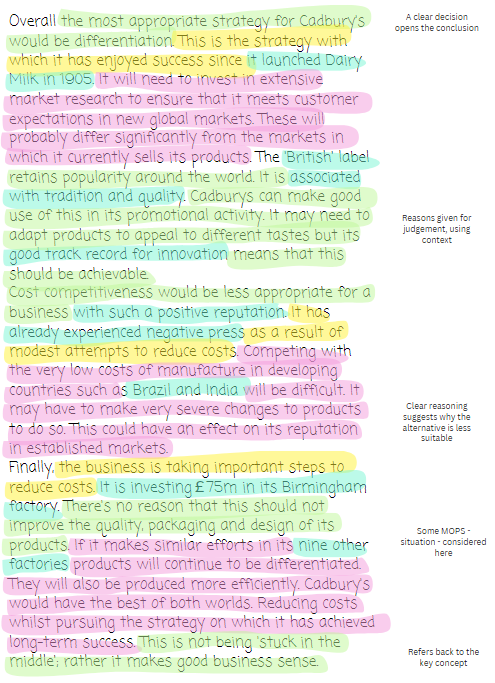| Step 1 |
- Start off by defining the key terms in the question stem, likely to be the two options
- This will secure some Level 1 knowledge marks and can help you focus your response
|

|
| Step 2 |
- In the next paragraph, you should start your analysis by making a strong point
- Support it with some relevant context from the stimulus material
- Quoting some data, including a calculation, or remarking on a key business feature or trend are good ways to do this
- Develop a chain of reasoning that develops the point logically. The X→Y→Z approach is a good way to build a coherent chain:
- E.g. X leads to Y which results in Z or X and Y lead to Z
- The best chains of analysis combine points effectively. For example:
- E.g. X1 and X2 lead to Y, which results in Z or X leads to Y1 and/or Y2, which results in Z or X leads to Y, which results in Z1 and/or Z2
|
|

|
| Step 3 |
- In the next paragraph, make a second relevant point for the first option
- Again, ensure that you include some context from the stimulus material
- You need to develop a similarly complex and coherent chain of XYZ reasoning.
|

|
| Step 4 |
- Now show balance by providing at least one counterargument for the first option
- Make a logical, relevant counterpoint
- Make sure that it remains relevant to the question stem
- A further chain of XYZ reasoning, with context, is also required
|

|
| Step 5 |
- You now need to move on to the second option
- Support a strong opening point with some relevant context from the stimulus material using the X→Y→Z approach
|

|
| Step 6 |
- Make a second relevant point for the second option
- You may choose to use business theories or models to support your analysis
|

|
| Step 7 |
|
- Again, show balance by providing at least one counterargument for the second option
- Make a logical, relevant counterpoint
- Make sure that it remains relevant to the question stem
- Some reference to what the business wants to achieve in making the choice is a useful way to do this
|

|
| Step 8 |
- In your final paragraphs, you need to make a supported judgement
- This should be the most developed section of your response
- Weigh up both of your arguments, considering their strength and relevance
- Compare them directly, considering which might be most effective in meeting business objectives
- A decision is required, along with the main reasons for your choice
- Are there any context-specific reasons for your choice?
- Do you have all of the information required to make a reliable recommendation?
- Does your answer depend on any internal or external factors?
- Try to broaden your reflection by considering factors such as whether your decision would be different in the long term, the views of different stakeholders, or the contribution your decision may make to achieving business aims and objectives
- The MOPS approach can be a useful way to frame your concluding paragraph
- Consider the market in which the business is operating, its objectives, the product it offers, and the situation in which it finds itself
- Are any of these factors of particular importance to the decision?
- This approach encourages you to include further contextual information and can make the difference between low-level and high-level responses.
|

|










